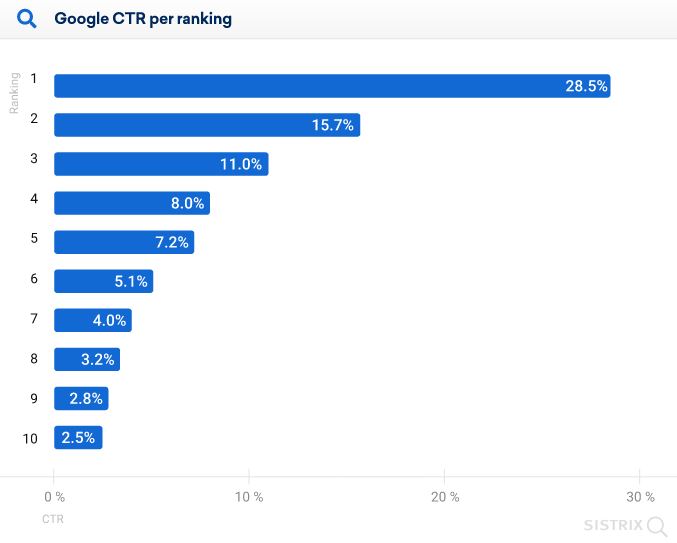The end of each year is a time for reflection, both personally and professionally.
Nearing the end of 2021, one of the things I started to see – as I do every year – was expert predictions on the future of marketing, including everything from the SEO trends 2022 will be defined by to the social media strategies which are likely to shape the coming year.
Now that the new year is here, I figured I’d better chime in with some of my own predictions on the role of SEO in 2022, so aspiring entrepreneurs and small business owners have something to reflect on when designing their marketing strategies for 2022.
That being said, I know you’re all very busy, just like me, so let’s just get right into it.
If You Want the Best SEO Strategy for 2022, You’ve Got to Understand SEO
Before I dive into my top three trends, I’m going to start by providing a short explanation of what SEO is and why it’s so important, so those of you who are new to this concept can understand what I’m talking about.
Search engine optimization is the process of optimizing your digital marketing efforts so you can attract more organic (free) traffic from search engine results.
This means people who are typing keywords relevant to your business into the search engines will be more likely to see your website, as it will appear higher in the search results, and won’t end up buried on the eighth page, which is a place where very few users bother to look.
The whole point of doing this is so more potential customers can find your business online.
Like it or not, the fact of the matter is if your business doesn’t appear high up in the organic search results, these people won’t even know you exist, and they’ll probably end up giving their business to one of your competitors.
study from Sistrix shows just how important SEO can be.
This study looked at the click-through rate for different positions in Google’s search engine results, and its findings are very telling.
Now, you might be wondering what a click-through rate is. I know, it sounds like a pretty technical term, but it’s actually not difficult to understand.
Simply put, the term click-through rate (CTR) refers to a method for gauging how well you’re performing in search engine results. This technique compares the number of times the link to your website is clicked to how many times it’s being shown.
For example, if you got 2 clicks on a link that showed up in the search results 100 times, then your click-through rate would be 2%.
So, now that you know what click-through rate means, let’s talk about the results of this study.
What this study found is that the average click-through rate for a search result in the first position (at the very top of the first page of search results) on Google is 28.5%.
More importantly, it found that when you go beyond the first position, this number tends to drop dramatically.
The CTR for the second position is 15.7%, and for the third position, it’s only 11%. Moving down to the tenth position, the average click-through rate is a measly 2.5%.

Those numbers all pertain to results on the first page, but when you look at the CTRs for results on the second page and beyond, the numbers are beyond dismal.
Sistrix’s study found all the results on page two had a CTR of “significantly less than one percent”.
So, if you’re not on the first page, search engine users will be unlikely to find you, as this study shows most users don’t look beyond the first page of results.
At this point, you’re probably asking, “How do I go about getting onto that first page?”
The answer is SEO. But what does search engine optimization involve?
Well, it actually involves a very long list of tactics for how to improve your website’s ranking in the search results.
But one of the most important aspects of any SEO strategy – and one that every entrepreneur and business owner should be thinking about – is choosing appropriate keywords and determining how to inject those keywords into valuable content.
The reality is, without the right keywords and valuable content to inject those keywords into, all your other SEO efforts are likely to fall flat.
So, now that you have a better idea of what SEO is and why it’s so important, I’m going to give you a few of my predictions for what SEO trends 2022 will be defined by, so you can create the best SEO strategy for 2022.
READ: How to Create Blog Content to Attract Your Ideal Target Audience
With all this talk about creating valuable content, you’re probably trying to figure out how to go about doing that, and I bet you could benefit from a few tips.
This article offers actionable advice on how to create high-converting content that will help you to turn leads in customers using several different techniques, including things like conducting keyword research, targeting the right keyword phrases, and more.
These 3 Trends Will Define the Role of SEO in 2022
Some of my clients have been wondering if search engine optimization is still relevant. This is one of those pointless debates that never seem to go away, so I’m going to put this one to bed right now.
For anyone still asking this question, the answer is a resounding yes! SEO is still relevant, it will continue to remain relevant, and it’s never going to go away.
So, instead of engaging in these kinds of debates, what we should be doing is looking towards the future of SEO, and trying to understand how it’s changing, what trends are shaping it, and how we can use this information to design SEO strategies that are up-to-date, agile, and effective.
That being said, I believe the following three trends are going to define SEO in 2022.
-
Artificial Intelligence
I could go on for hours about how AI is shaping the world of marketing, but for the purposes of this article, I’m just going to talk about it in relation to SEO. More specifically, I want to discuss how this trend relates to Google.
The search engine giant frequently updates its algorithm, which is a form of artificial intelligence that determines how websites are going to be ranked within its search engine results.
Google is constantly creating different iterations with cute names like Panda, Penguin, Pigeon, and Possum.
The most recent update, announced by Google in August of last year, is called the Multitask Unified Model, or MUM. This version of the algorithm is built to better understand the feelings and intent of search engine users, in order to provide search results that are even more relevant.
If you want more information on how this algorithm works, check out the video below.
In any case, Google’s overarching objective, at least with its search engine, has always been to improve the experience of users. So, if you want to design the best SEO strategy for 2022, it’s crucial to understand this.
You see, Google’s goal is to provide the most relevant results for each search query, and that means weeding out low-value content and content that’s not directly relevant to whatever the user is searching for.
So, with Google announcing yet another algorithm update just last summer, this trend is sure to continue throughout this year and beyond, as Google’s algorithm becomes more intelligent, and its standards become even more stringent.
Therefore, when you’re choosing your keywords and creating your content, your goal should be basically the same as Google’s.
You should be aiming to create high-value content that is highly relevant to the keyword phrases you’re targeting and provides a lot of value for users.
If you’re doing anything less, your page is going to get buried, period.
-
User Intent
This trend is directly related to the last one, as this is the sort of thing you need to be thinking about in order to determine what kind of content to create.
In any case, given Google’s new update, I think this year we’re going to see a very significant shift in terms of how people are thinking about content, particularly as it relates to user intent.
Whereas in the past, people were designing content with nothing but search engines in mind, moving forward, content creators are going to have to spend more time thinking about the intent of the users who will be consuming that content.
What do I mean?
Well, the algorithms being used by Google consider a host of factors that indicate whether or not your content is providing value to users.
They look at all kinds of stuff, but the two factors I want to focus on are how much time users are spending on your content, and how quickly they click away from it.
The point I’m trying to make is if you’re providing low-value, threadbare content, or content targeting keywords that are irrelevant to what’s contained in that content, then users are not going to spend time consuming it, and they’re going to click away very quickly.
Google’s algorithm won’t take long to pick up on this, and as a result, that content’s ranking is going to plummet, placing it low in the search results, where very few users are likely to find it.
At the same time, even if users do somehow manage to find it, if it’s not providing any value, or it’s totally irrelevant to what they’re searching for, do you really think it’s going to encourage them to give you their business?
Not likely. So, when you’re choosing your keywords and creating your content, make sure you consider the intent of the users who will end up consuming it.
-
E-A-T
E-A-T is an acronym that stands for expertise, authority, and trustworthiness, and this concept comes directly from Google’s guidelines.
Now, you’re probably wondering how this relates to SEO.
Well, it’s simple, really. Expertise, authority, and trustworthiness are three things considered by Google’s algorithm when deciding where to place a given link within search engine results.
It does this by considering a massive list of factors, which I’m not going to go into detail about here. However, I do want to focus on these aspects of the algorithm as they relate to content and user intent.
So, when determining the expertise, authority, or trustworthiness of a piece of content, Google’s algorithm looks at some of the same things I mentioned above, including how much time people spend consuming your content, and how quickly they click away from it.
But it also looks at things like how much engagement it’s getting. This includes things like how often that content is getting shared on social media, and how many times it’s been linked to by other websites.
This trend is closely related to user intent because if your content isn’t providing value, and it’s not relevant to the keywords you’re trying to target, it’s unlikely that users are going to be acting in ways that have a positive impact on your credibility.
In other words, it’s not going to get shared on social media or be linked to on other websites, users are not going to spend time on your content, and they’re going to click away from it very quickly.
This is all going to detract from how Google perceives your level of expertise, authority, and trustworthiness, and that can have a profoundly negative effect on your SEO.
At any rate, with every passing update to Google’s algorithm, the quality and relevance of content are going to become increasingly important.
Therefore, I think this year, people are going to be looking at these factors much more closely and doing everything possible to exude that trustworthiness, authority, and expertise.
If you want to design the best SEO strategy for 2022, you need to consider these three interrelated trends, which are bound to be defining aspects of SEO in the coming year.
I know this is a lot to take in, but if you feel like it’s too much to handle, you can always work with a professional marketing company. We can take care of every aspect of your digital marketing and set you up for your most successful year yet.
To your business success,
Susan Friesen
P.S. If you liked the article, you might want to subscribe to our newsletter. We publish tons of valuable content to help you learn more about marketing, and subscribing is the best way to ensure you don’t miss out. Additionally, if you’d like to learn more about building a search engine optimized website, click here for our free website guide.








